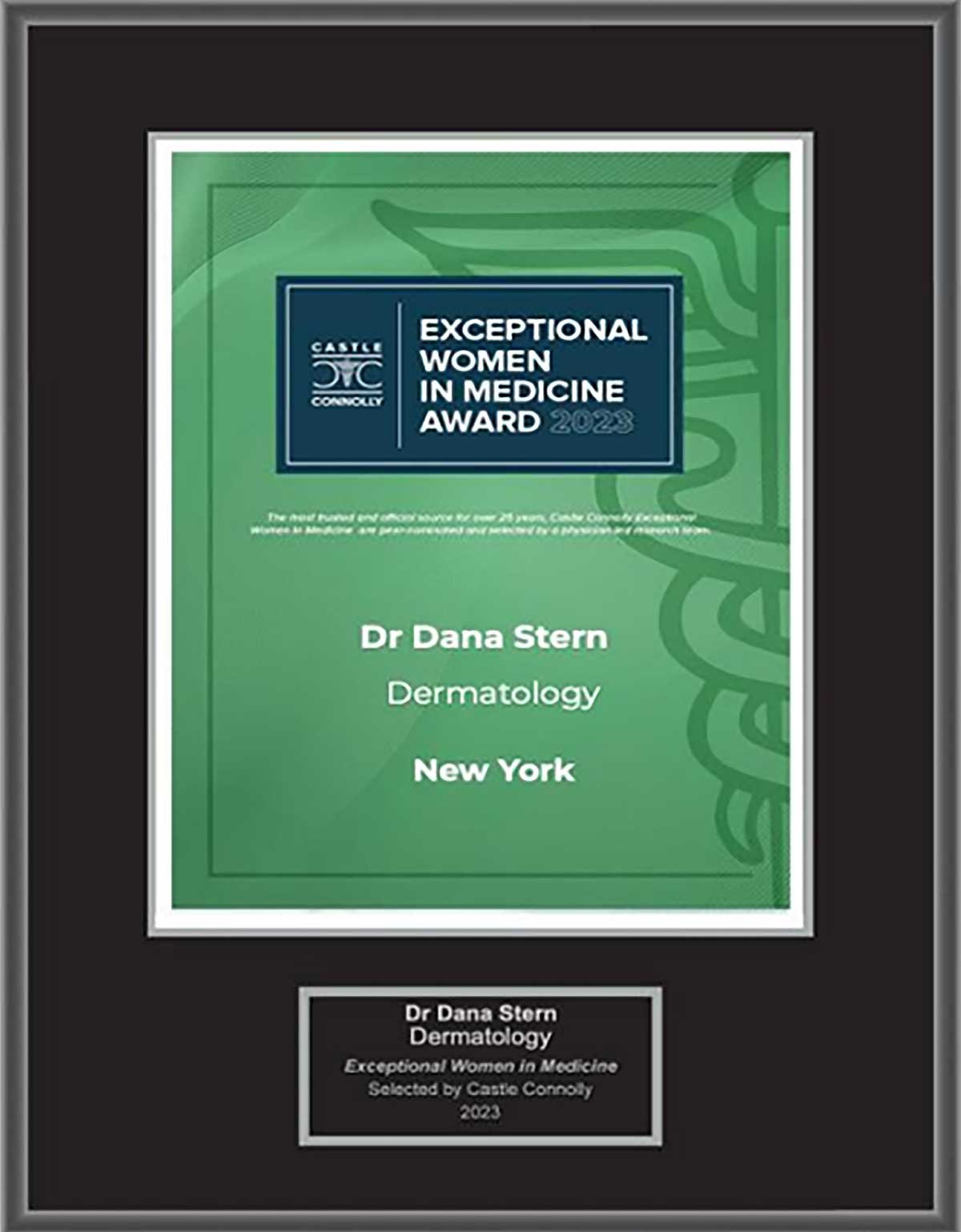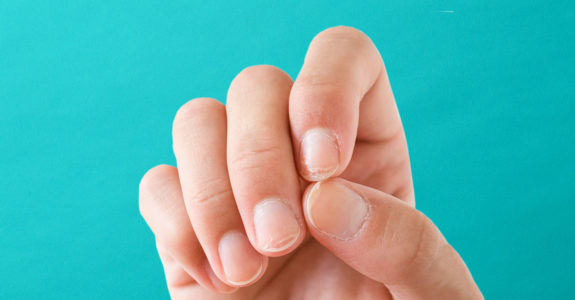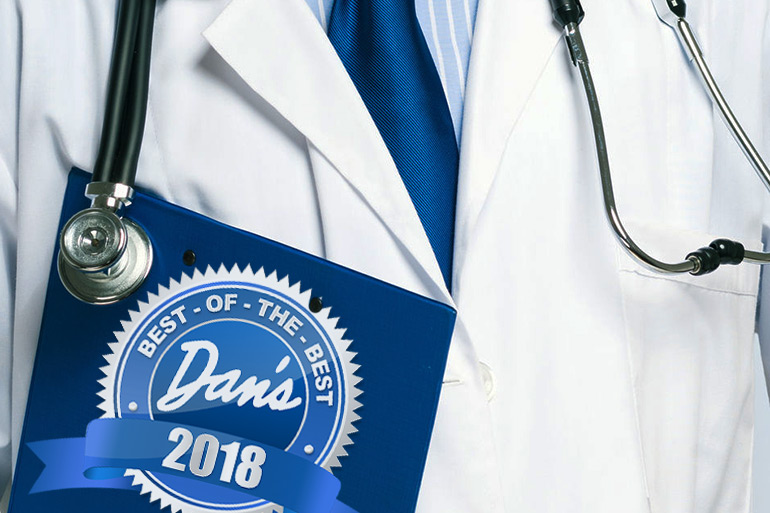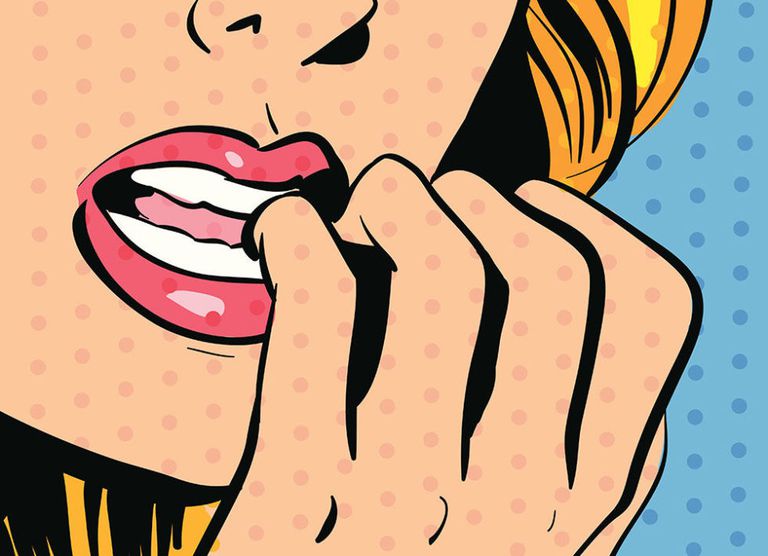Dr. Stern has received Castle Connolly’s Exceptional Women in Medicine Award for 2023
Dr. Dana Stern is One of America’s Most Honored Doctors for 2023
Dana Stern is One of America's Most Honored Doctors - Top 1% 2022
Dr. Dana Stern has been named to the 2022 New York Super Doctors list
Dr. Dana Has Received Castle Connolly's Exceptional Women in Medicine Award for 2022
Dr. Stern Has Been Awarded Top Doctor 2022 by Castle Connolly
Dr. Stern is a 2021 “Dan’s Best of the Best” winner
Rare Beauty Brands Acquires Dr. Dana Beauty
Dr. Stern Has Been Awarded Top Doctor 2021 by Castle Connolly
Mt. Sinai Dermatology Resident Training With Dr. Stern
Dr. Stern recently taught an anatomy nail course to the Mt. Sinai dermatology residents.
Exceptional Women in Medicine 2019
Dr. Stern has been named to the 2020 New York Super Doctors® list!
We are proud to announce that Dr. Stern has been nominated to the 2020 New York Super Doctors list. Please click the link below to view the listing.
Dan’s Best of the Best 2019 Winners!
We are proud to announce that Dr. Stern is a 2019 “Dan’s Best of the the Best” winner.
What Do Your Nails Say About Your Health?
Though small in size, your fingernails can offer important clues that point to larger underlying health problems, such as lung disease, diabetes…and even cancer.
Nail changes may be among the first symptoms of an undiagnosed condition. That’s because conditions that affect your entire body often alter blood flow to your nails, leading to changes affecting their color, shape, thickness and texture. Paying attention to these digit-protectors could help you get an early diagnosis.
Dan’s Best of the Best 2018 Winners: South Fork Wellness & Beauty
We are proud to announce that Dr. Stern is a 2018 “Dan’s Best of the the Best” winner.
Yellow Nails
There are several causes of yellow nails, some cosmetic in etiology and others indicative of an underlying medical issue and so it is important to understand when to see a physician.
One of the most common causes of yellow nails is from secondary staining from nail lacquer. Because the porosity of the nail is variable, certain individuals who inherently have more porous nails are more prone to pigment migration and thus secondary yellowing. Another common cause of polish induced nail yellowing is from the polish remover. Polish remover dissolves polish resulting in the migration of pigments that then can leach into the nail plate causing yellow discoloration. Theoretically the longer the soak, the more leaching that will potentially occur. The last factor related to polish has to do with the dye content of the polish. Not all polish dyes are alike. Generally, the darker the color, the more the pigment has an opportunity to migrate and leach into the nail plate to cause yellowing. While darker colors tend to be the culprit more often, this phenomenon can also occur with lighter colors as well. Yellowing from polish is not a brand related phenomenon. Yellowing is an issue that can occur with all nail polish brands.
How do we distinguish polish induced yellowing from other causes of nail yellowing?
When the cause is purely from polish, the nail will be healthy looking and intact but have a yellow hue throughout. The surface will be smooth and a normal thickness as opposed to fungal nails where there is thickening or subungual (under the nail) crumbling. And importantly, there will be a history of prior polish application.
How to treat?
Polish induced nail yellowing is a cosmetic issue. There are two options as far as treatment. The first is to take a nail polish holiday and to try to lighten the nail. Alternatively, the nail can be camouflaged with additional polish. For those who want to treat, severe stains can be lightened by using a dilution of Hydrogen Peroxide. This at home remedy can be made by combining three to four tablespoons of Hydrogen Peroxide and 1/2 cup of water and mix well, then soak nails for 2 minutes. Using a soft toothbrush, gently scrub the surface of the nails. Rinse with water. Repeat 2-3 times per week as needed. Alternatively, you can use a whitening toothpaste as these are formulated with Hydrogen Peroxide. The Dr. DANA Nail Renewal System is great for lightening discolored nails. Step 01 contains Glycolic Acid and combined with our Step 02 Perfect Grit Priming wand, the system is very effective at removing nail discoloration. Avoiding polish is essential during the treatment period.
Is there anything you can do to prevent polish induced yellowing from happening?
Keeping the canvas healthy is imperative. Over filing the surface can theoretically lead to increase pigment leaching into the nail. Don't forget to use a good quality base coat like the Dr. Dana Hydrating Base Coat unless the product specifies that one is not needed. In most instances, a good quality basecoat will create a protective barrier layer for the nail plate. Lastly, try to remove polish quickly. If you need to rub for 10 minutes then the pigments have a better opportunity to leach into the nail. Quickly remove the polish and wash hands immediately.
Other “non-medical” causes of nail yellowing include staining from extrinsic environmental exposures to ingredients such as tobacco, tanning products or Henna. In these cases a thorough exposure history will usually uncover the yellowing culprit.
There are several causes of nail yellowing that are due to medical conditions. The most common being fungal infections of the nail. Fungal infections of the nail can make the nails thick, yellow, and crumbly. Proper diagnosis and treatment are essential to be able to achieve resolution. Nail fungus (onychomycosis) affects approximately 35 million people in the United States. Fungal nails can be yellow, thick, and crumbly or they can have yellow streaks within the nail plate and be generally smooth and intact. It is far less likely to have a true fungal infection of the fingernails, ie. one that is caused by a dermatophyte. Most toenail fungus starts off in the soft tissue, as athlete’s foot, and then enters the nail when there is an injury or lifting of the nail.
Onycholysis, or separation of the nail plate from the underlying nail bed is another potential cause of nail yellowing. This common condition is often observed on the fingernails in contrast to Onychomycosis where the majority of cases are confined to the toenails. When the nail lifts off of the nail bed, the nail will appear as a white to yellow opacity in the area of separation. This is due to air and other debris under the compromised nail plate. Although there are many causes, the most common include overly aggressive cleaning under the nail as well as some inflammatory conditions such as psoriasis. When the nail is separated, yeast often colonize on the nail bed as it is a barrier compromise that is allowing water and moisture to settle under the nail and these are the ideal conditions that allow yeast to flourish. Treatment will usually include adhering to a strict irritant avoidance regimen where nail polish remover and exposure to household chemicals and water is avoided. Polish removers are strong solvents that will cause irritation to the delicate nail bed tissue when there is an opening under the nail plate. Additionally, a prescription topical anti-yeast treatment will often need to be prescribed.
The Yellow Nail Syndrome is another non-cosmetic cause of nail yellowing. The toenails appear thick and have a yellow to green tinge and frequently lack a cuticle as well as lunula (the half moon that is usually visible on the thumb nail and great toenail). This entity is due to failure of the nail to grow sufficiently and is associated with lymphatic disease as well as lung disease or malignancy. The underlying disorder must be treated but tends to be chronic.
Is It Possible To Be Allergic To Manicures ?
Is it possible to be allergic to manicures?
Allergic reactions to beauty and personal care products occur when the skin is repeatedly exposed to small amounts of the allergen over months to years. The reaction to the allergen usually appears several days after the cosmetic has contacted the skin and can appear as redness, swelling, and blistering of the skin or surrounding the nail. Sometimes the nail will burn and then separate or lift off of the nail bed. Interestingly, when the stimulus is a nail ingredient, the rash does not always appear on the fingertips and sometimes presents as a rash on the eyelids, the lips arms, chest or neck. Allergic reactions to nail products are much less common than irritant reactions. Anyone can develop an irritant reaction to a nail product if enough of the chemical comes in contact with the skin and because irritant reactions can look like allergic reactions, distinguishing the two can be challenging but is important because allergies tend to be life-long whereas irritant reactions are not. Also, if you have a true ingredient allergy then you will likely be allergic to any product that has that ingredient or even ingredients with a similar chemical structure. Therefore, it becomes important to be able to distinguish allergic from irritant reactions and patch testing is the best method to accurately differentiate between the two. Dermatologists patch test by applying a concentrated amount of the suspected chemical to the skin on the patient’s back and the skin is usually evaluated two and then four days later.
What exactly is the reason for the reaction? What are people actually allergic to?
There are hundreds of ingredients in personal care products and nail cosmetics that can cause allergic reactions. In the nail salon, allergies can occur to soaps, hand sanitizers, fragrance or preservatives in hand and foot creams, reactions to ingredients such as uncured methacrylate or acrylate oligomers and monomers in gels, tosylamide/formaldehyde resins or toluene which are in some nail polishes and hardeners, and even airborne induced allergies can occur from dust from acrylics and fumes from glues. In the salon, enhancements in particular are often the culprit because of improper curing. Once the product is cured completely, it cannot cause an allergy. However, any repetitive skin contact with uncured gels, resins, monomers or adhesives can cause allergic reaction to develop.
What are some signs that someone might be allergic?
Often allergies from nail cosmetics can appear on the face. Think, itchy, swollen eyes, or lip swelling. When the reaction is localized to the nails possible reactions include: redness, swelling, and blistering of the skin or surrounding the nail. Sometimes the nail will burn and then separate or lift off of the nail bed. A new reaction that has recently been observed from allergies to the gel manicures (UV soak off gels) is a psoriasis reaction of the nail bed. The nails appear to develop psoriasis suddenly after documented exposure to gel manicure.
Are people more likely to be allergic to gel manicures than regular ones?
Anything that requires curing is theoretically a larger allergen risk. Nail techs are a lot more at risk than nail clients for allergy development because they have repetitive exposures. For techs: The biggest thing that techs can do is to know the products that they are working with inside and out. Proper curing of products is essential as repeated exposure to improperly cured product is one of the biggest reasons for salon tech product sensitivity. Improper curing can occur from using the wrong nail lamps as every product requires a specific UV wavelength for proper curing. There is no such thing as a universal lamp that works for all products and brands. Other causes of improper curing include applying product too thick, mixing brands, rushing through a service and not allowing proper cure time, using incorrect liquid to powder rations and not maintaining and cleaning UV bulbs. Nail techs should always follow the manufacturers instructions and not rely on fellow technicians or on-line videos. If a client calls hours later to report the reaction then it is more likely to be an irritant induced reaction. Salon technicians should have relationships with local dermatologists that they can refer their clients to in an event like this. If the client’s reaction is on or surrounding the nails and you the gel or enhancement product has just been applied, it is important to not soak them off until they are seen and treated by a dermatologist.
Any advice on how to avoid these reactions (other than simply giving up nail polish for good)?
The best advice is to avoid the allergy from the get go. Look for polishes that are Free of the common culprits (9-Free). Nail techs can also consider wearing gloves. Nitrile gloves are preferred as many clients may be latex sensitive. As previously stated, avoiding skin contact is the key to minimizing risk. General operational protocols such as keeping tools, containers and working surfaces clean and dust free.
If the reaction is confirmed to be a true allergy then avoidance of the allergic trigger is imperative and avoiding other products with the ingredient will also be key.
Would you recommend women experiencing these reactions visit an allergist to know for sure?
They should visit a board certified dermatologist who has extensive experience with patch testing.
Nail Biting Q&A
What are the most common causes of nail biting, both casual and chronic?
The exact cause of nail biting (onychophagia) is currently unknown but there are studies that show a genetic relationship and nail biting may be more common with certain psychiatric disorders such as anxiety and obsessive compulsive disorder (however studies have shown conflicting results). Nail biting has also been shown to be associated with boredom or a lull in activity.
The association of anxiety with onychophagia is controversial with some studies showing no difference in the prevalence of anxiety in nail-biters versus non-nail biters while other studies did report an association.
(3Pacan P, Grzesiak M, Reich A, et al.Onychophagia and onychotillomania: prevalence, clinical picture and comorbidities. Acta Derm-Venereol.2014;94:67–
The data relating onychophagia to obsessive compulsive disorder (OCD) is limited and many studies do not include a control group. In one study, the authors found a trend for a higher prevalence of nail biting among subjects with OCD in comparison with control subjects. The take home message is that the relation btw anxiety and OCD and nail biting is unclear
How Common is Nail Biting?
Onychophagia is a common disorder affecting 20–30% of the general population. However, its prevalence is likely underestimated, as patients are often embarrassed to seek help from physicians
What are the symptoms of nail biting ie. what do the nails look like in a nail biter?
Nails tend to be abnormally short and uneven. Cuticles may be absent or ragged and nail folds may be in varying stages of healing. Splinter hemorrhages are often present (longitudinal black thin lines in the nail that look like splinters).
What other skin/nail/health issues might it lead to?
Nail biting can lead to a host of complications:
1)Longitudinal melanonychia – pigmented bands in the nail can occur from inadvertently stimulation the melanocytes (melanin producing cells) that reside in the lunula (half moon region) of the nail.
2)Paronychia – inflammation of the skin surrounding the cuticle. Paronychias can be chronic (colonized by yeast) or acute (fluctuant, painful, bacterial infections)
3)Herpetic Whitlow-when Herpes virus of the mouth transfers to the finger
4)Oral/dental complications
What are the treatment options for nail biters?
Discussing habits can be a sensitive subject and one that is best handled by a medical professional. When there is a psychological component (anxiety/OCD) the client should be treated by a therapist and/or a psychiatrist.
Treatment options:
1.Habit Reversal - Encompasses awareness of the nail biting activity, warning signs, and development of a distracting competing response such as a stress ball, fidget cube or spinner or rubber band.
2.Bitter nail lacquers contain the unpleasant tasting compounds, denatonium benzoate and sucrose octaacetate, and are available over the counter. If nail biting is a very common issue in your salon, consider offering these products in the salon.
3.Utilizing a non-removable reminder, i.e. wristband, as a reminder to stop biting nails.
Any other expert tips on approaching the treatment of nail biting?
Dr. Dana Stern recommends that her patients keep a diary for several days to get a sense of when they are doing the habit and to see if there is a stimulus (stress, boredom). That way they can initiate habit reversal by having a competing response ready when they are most likely to engage in the habit.
Peeling Nails aka. Onychoschizia
Peeling nails (onychoschizia) are one of the two clinical criteria for brittle nails, the other being ridging (onychorrhexis). Peeling nails can be genetic, age related (more common as we age), and product related (strong solvents like acetone can dry out the nail causing brittleness). If these changes come on suddenly in someone who previously always had great, healthy nails, then anemia or thyroid disease should be explored by a physician.
Although challenging to treat, peeling nails can be dramatically improved by the following recommendations:
1) Use a high quality glass file instead of an emery board
These files are great for those who are prone to onychoschizia (peeling and breakage at the tip of the nail) because they do not cause the microscopic tears that typical emery boards cause. Also, they can be sanitized easily for reuse and never dull.
2) Use nail polish remover sparingly and stick to formulas that are acetone free
Polish removers are solvents and tend to be very drying and dehydrating to the nail. Constant use of remover can lead to dry, brittle nails (weak nails and peeling nails). Limit remover use to a maximum of once weekly. Always be sure to wash your hands after polish is removed to remove any solvents.
3) Nail polish can be protective for peeling nails!
Certain nail damage (nail peeling for example) will actually benefit from nail polish because the polish serves as a kind of glue to hold the delicate, fragile onychocytes (nail cells) together. This is especially relevant if your nails are exposed to a lot of water. However, limit polish remover to acetone free formulas and try to limit remover use to a maximum of once weekly.
4) Nail exfoliation
When your skin is dry and peeling you reach for the nearest luffah or Clarisonic brush to exfoliate the dead cells in order to allow for maximum absorption of your moisturizer. The same concept is true of the nail. If you were to look at a peeling nail under the microscope you would see that the nail cells are detached, lifted, separating….this is why the nail peels, splits and even why polish doesn't always go on so smoothly and has more of a tendency to chip. Essential exfoliation (removing the aforementioned damage) is key! Achieve essential exfoliation and beautiful, healthy nails instantly with the Dr. Dana Nail Renewal System. The Nail Renewal System is the first ever nail treatment system to incorporate Glycolic Acid (an alpha hydroxy acid) that has been shown in the medical literature to have nail rejuvenation properties.
5) Treat peeling nails with effective ingredients
Not all nail moisturizers are created alike. Look for formulas that are rich in phospholipids like sunflower oil. Avoid purported nail treatments that require polish remover as this will exacerbate the issue. And always avoid formulas that contain Formaldehyde or Formalin as this chemical in addition to be a potential carcinogen, irritant and allergen will cause the nail to stiffen and eventually induce paradoxical brittleness and peeling nails.
6) Use gloves with any wet work.
Excessive exposure to water can have a harmful effect on the nails. The nail is like a sponge, it is significantly more absorptive of water than the skin (1000 times more than the stratum corneum of the skin) for example and so water can easily diffuse into the nail. The delicate nail cells (onychocytes) are put under significant strain and this leads to brittleness, peeling nails and breakage.


















